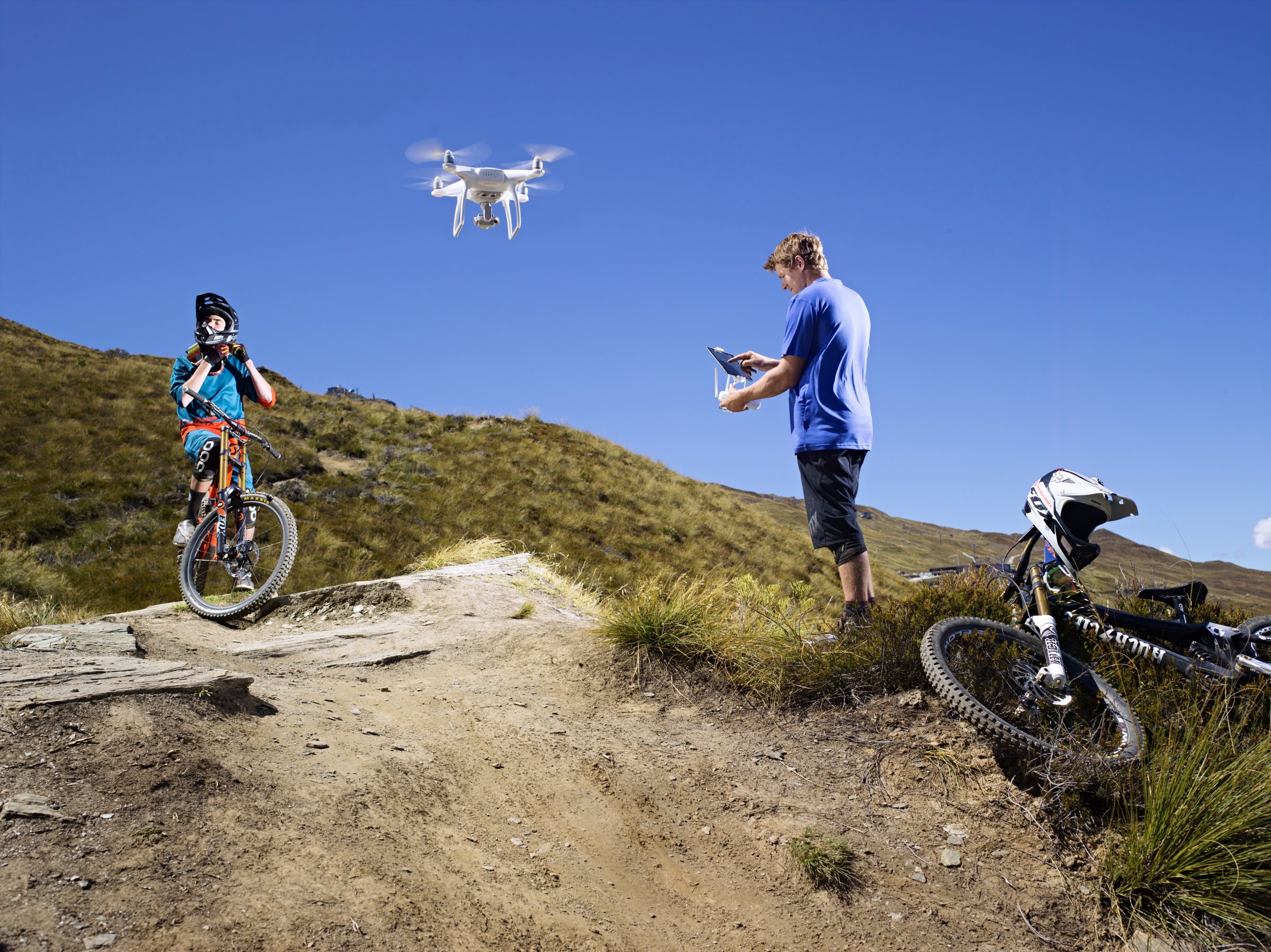
Drones can already follow professional snowboarders as they speed down a slope or keep up with mountain bikers racing through rocky terrain. But drone-equipped athletes are usually required to keep their phone nearby, since the aerial devices often rely on handheld devices’ GPS signal to track a person’s location.
DJI’s newest drone, the Phantom 4, claims to eliminate that hassle. The company says the Phantom 4’s new ActiveTrack feature uses the drone’s front-facing sensors to see and track a target.
“Being able to learn about the object, as it squats, as it rotates, as it turns, is really complicated,” says Michael Perry, DJI’s director of strategic partnerships. “When you’re flying toward something, you have to make a decision to fly around it, fly above it, or stop. And to train the system to learn those different functions is also a big challenge.”
Powering DJI’s new tracking system are two key technologies: Machine learning and computer vision. The first lets computers learn new concepts without precise human instruction. The second involves sensors and cameras that give computers a digital form of sight.
“We taught [the Phantom 4] to understand the physiognomy of a person so that it can automatically say, ‘this is the shape that a person is,'” says Perry.
The Phantom 4’s tracking system can also automatically see and avoid obstacles. That should make it easier for inexperienced pilots to shoot more detailed footage with it without fear of crashing. Other companies working on drones, like Intel and Skydio, are also experimenting with ways to enable drones to “see” where they’re going. But the Phantom 4 is among the first mainstream consumer drones with the capability.
DJI says that making drones easier to fly is a major focus for the company moving forward. Controlling the Phantom 4 can be as simple as selecting a desired destination on a smartphone app.
“There’s definitely a lot of potential for the tech to advance. We’re looking at other ways of simplifying the control mechanism,” says Perry. “The first thing is getting it into people’s hands. And that’s where the innovation really comes out.”
More Must-Reads from TIME
- Cybersecurity Experts Are Sounding the Alarm on DOGE
- Meet the 2025 Women of the Year
- The Harsh Truth About Disability Inclusion
- Why Do More Young Adults Have Cancer?
- Colman Domingo Leads With Radical Love
- How to Get Better at Doing Things Alone
- Michelle Zauner Stares Down the Darkness
Contact us at letters@time.com